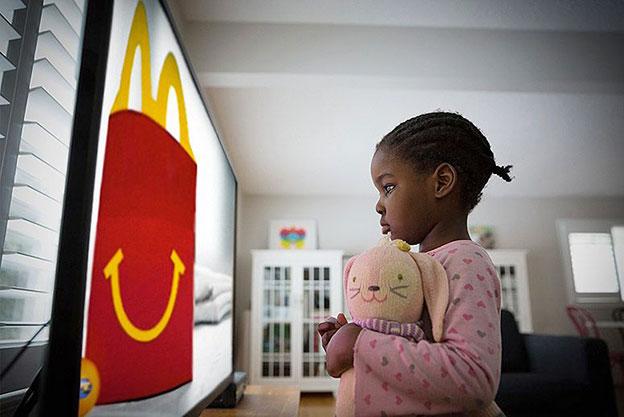You are here
YouTube stars pushing junk food get children to eat more unhealthy snacks
By Reuters - Mar 05,2019 - Last updated at Mar 05,2019

Photo courtesy of nyoozee.com
Children who see young social media influencers promote junk food may consume more unhealthy calories, a new study suggests.
Advertising aimed at children has long been linked to an increased risk that children will make unhealthy food choices and press their parents to buy them more processed, sugary and calorie-loaded foods. Studies also suggest children can be easily swayed to try junk food endorsed by celebrities and cartoon characters. Less clear, however, is how their eating habits are impacted by social media influencers.
For the current study, researchers in the UK recruited 176 children, ages nine to 11, and showed them Instagram profiles for two of their age group’s most popular YouTube video bloggers. The children were randomly assigned to view three types of Instagram profiles: healthy food marketing, junk food promotions or endorsements unrelated to food.
After children saw the Instagram profiles, researchers served four snacks — jelly candy, chocolate buttons, carrots and seedless white grapes — and let kids eat as much as they wanted for 10 minutes. None of these foods were the same items kids saw on Instagram.
On average, children who saw junk food promotions consumed 448 calories, compared with 389 calories for children who saw healthy food marketing and 357 for those who did not see any food promotions, the study found.
While all of the children ate much more candy than carrots or grapes, kids who saw junk food promotions consumed more sweets than the other children: An average of 385 calories compared with 320 calories for kids who saw healthy food marketing and 292 calories for those who did not see food promotions.
“Children look to social media for role models, and are likely to imitate the behaviour of media characters that they look up to and admire,” said lead study author Anna Coates of the University of Liverpool in the UK.
“Unlike adults, children are more impulsive and are less motivated to resist food marketing as they are not driven by long term health goals,” Coates said by e-mail.
One of the YouTube stars shown to children in the study was a 26-year-old female with about 12.1 million subscribers on YouTube; the other was a 23-year-old male with about 4.1 million subscribers.
There was not a meaningful difference in the total calories consumed or the amount of candy eaten by children who saw healthy food promotions or no food marketing at all, researchers report in “Paediatrics”.
One limitation of the study is that many of the children were already familiar with the two video bloggers featured in the experiment, and it is possible that their food choices were impacted by how much they liked or disliked these “vloggers” before they joined the study, researchers note.
Another drawback is that the experiment did not look at how children may actually engage with social media content, the study authors note. It didn’t assess how children might be influenced by content “liked” or shared by their friends in the real world.
Even so, the results offer fresh evidence of how social media can negatively impact childrens’ eating habits, said Jennifer Harris of the Rudd Center for Food Policy and Obesity at the University of Connecticut in Storrs.
“We already knew that food companies spend a lot of money to popular social media influencers to appeal to teens and increase the ‘cool’ factor for their products,” Harris, who was not involved in the study, said by e-mail. “But this is the first study to show that this type of marketing increases children’s consumption of any available junk food — not just the advertised products.”
Related Articles
Three in four food advertisements and half of drink promotions during major US sports programmes peddle high-calorie, sugary products, a new
Children exposed to food advertisements are more likely to overeat, especially if they have a specific version of a gene linked to obesity,
Children who skip breakfast on a regular basis are likely to fall short for the day in getting all their recommended essential nutrien


















